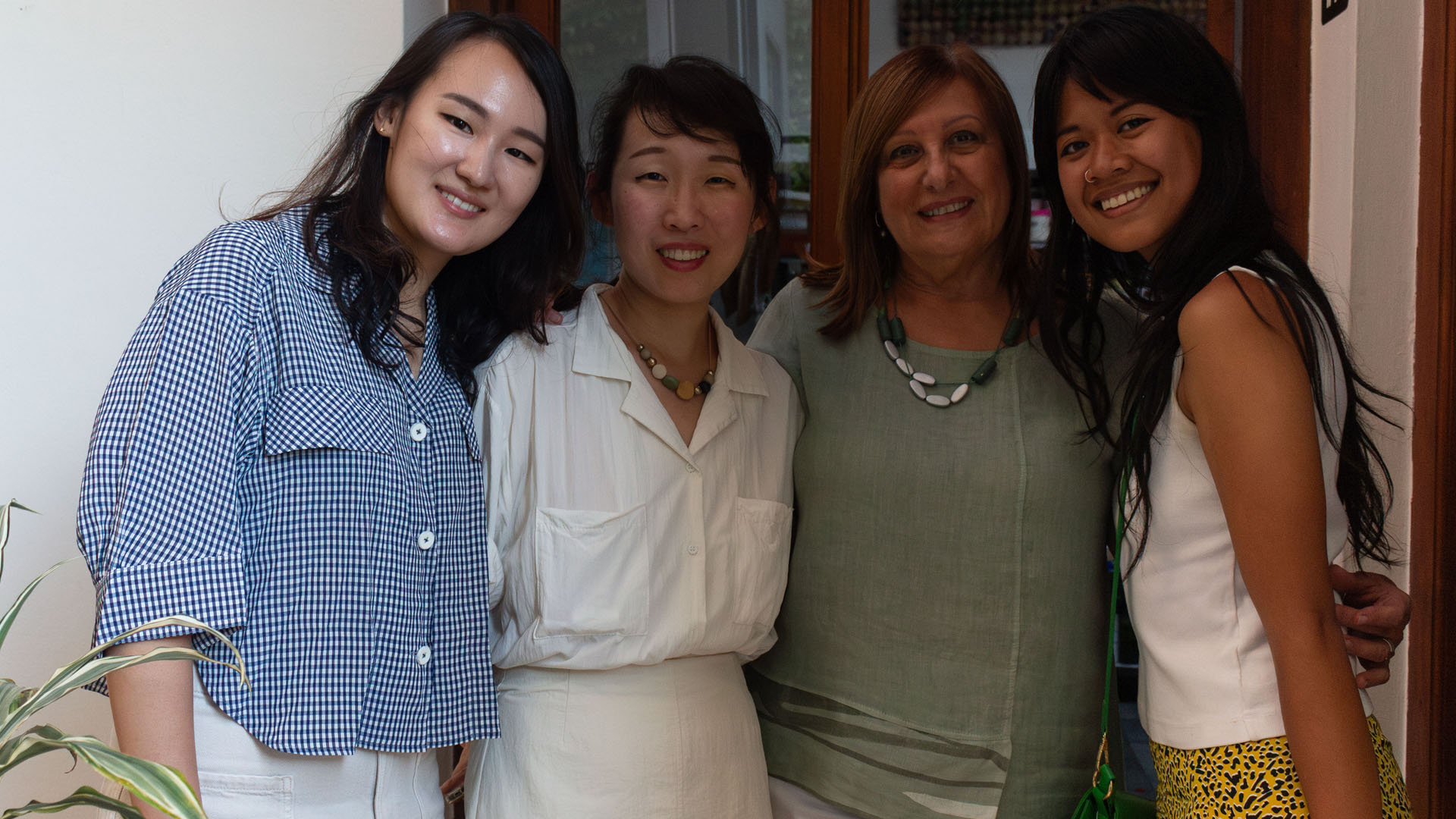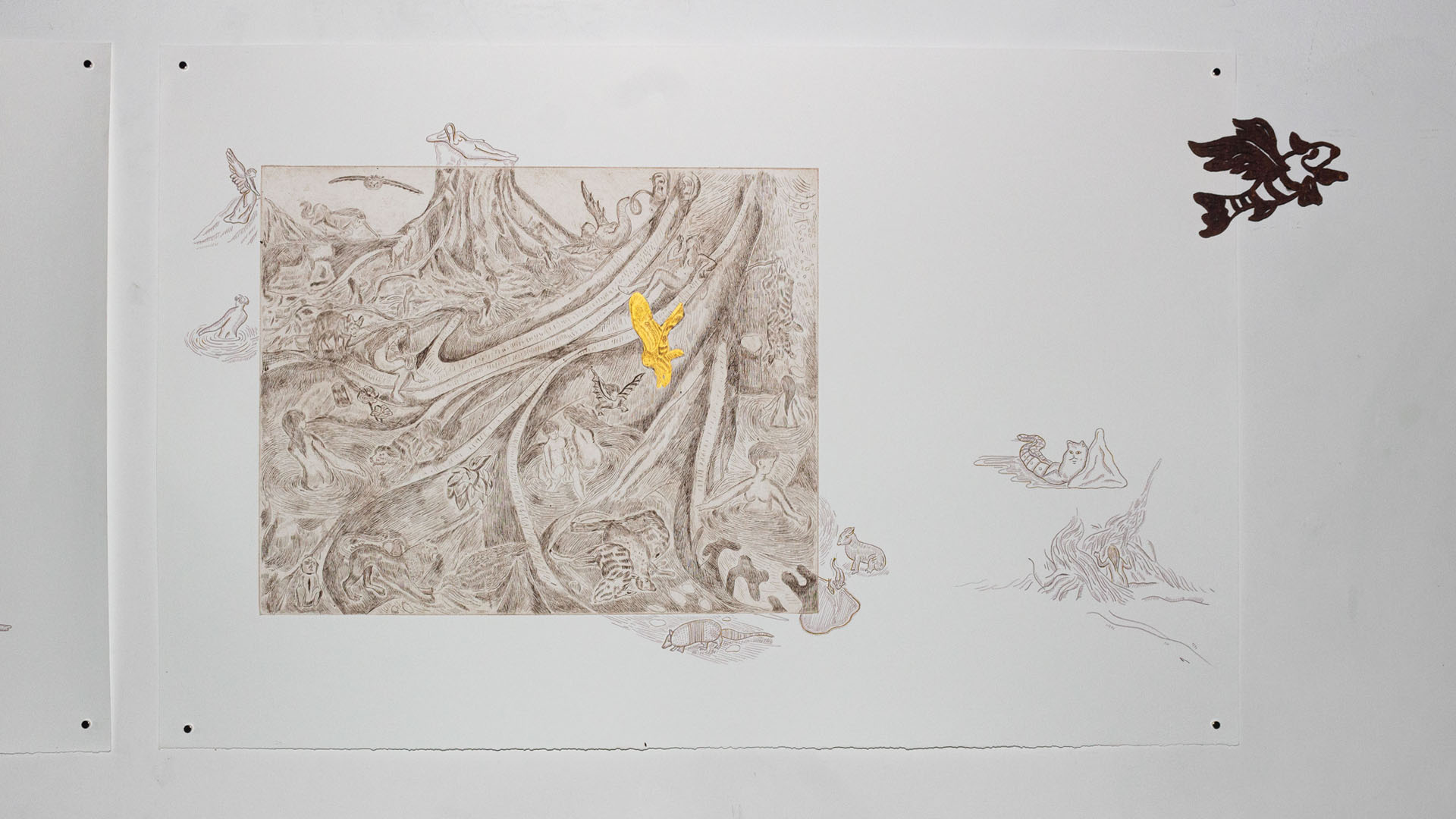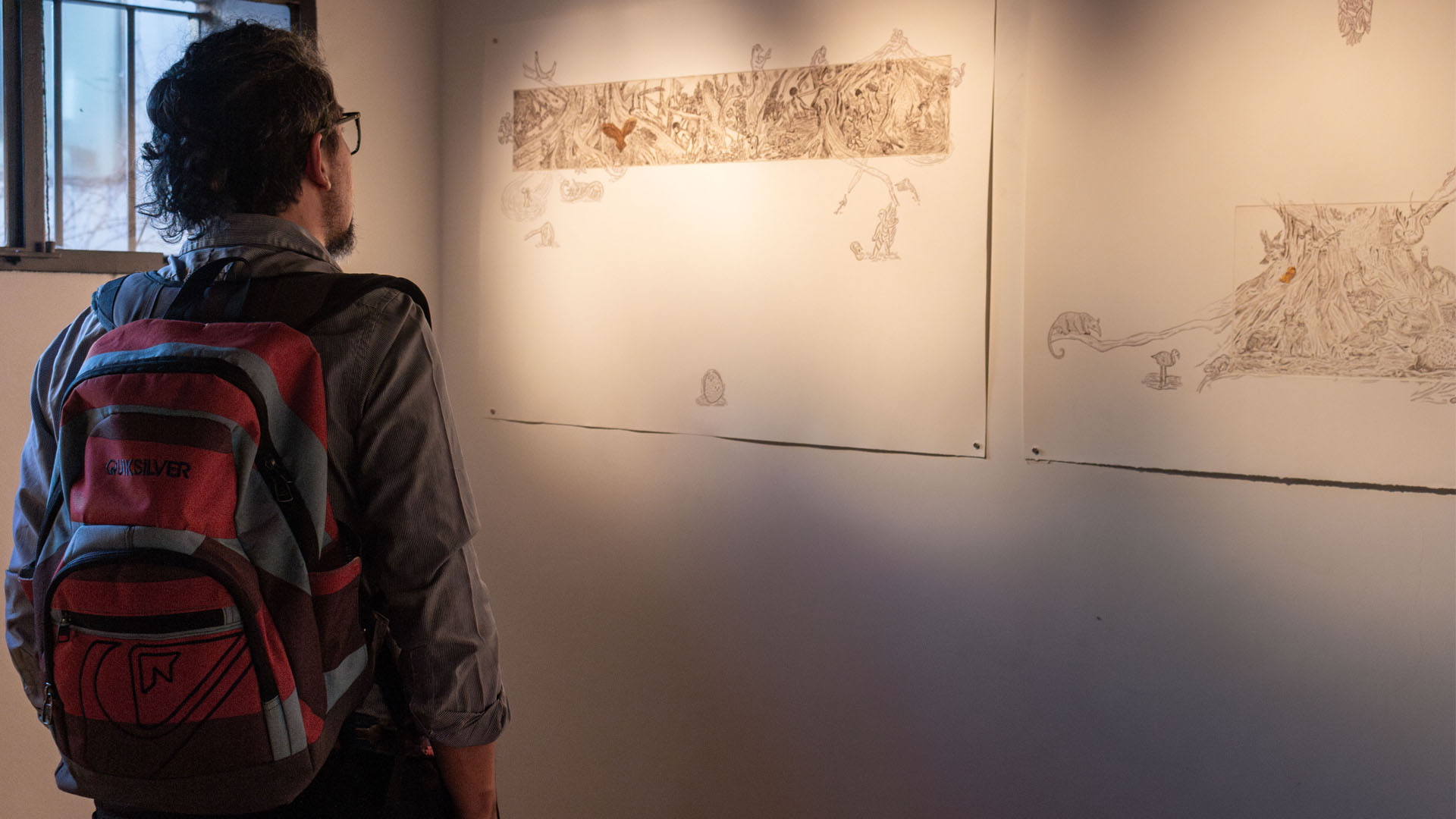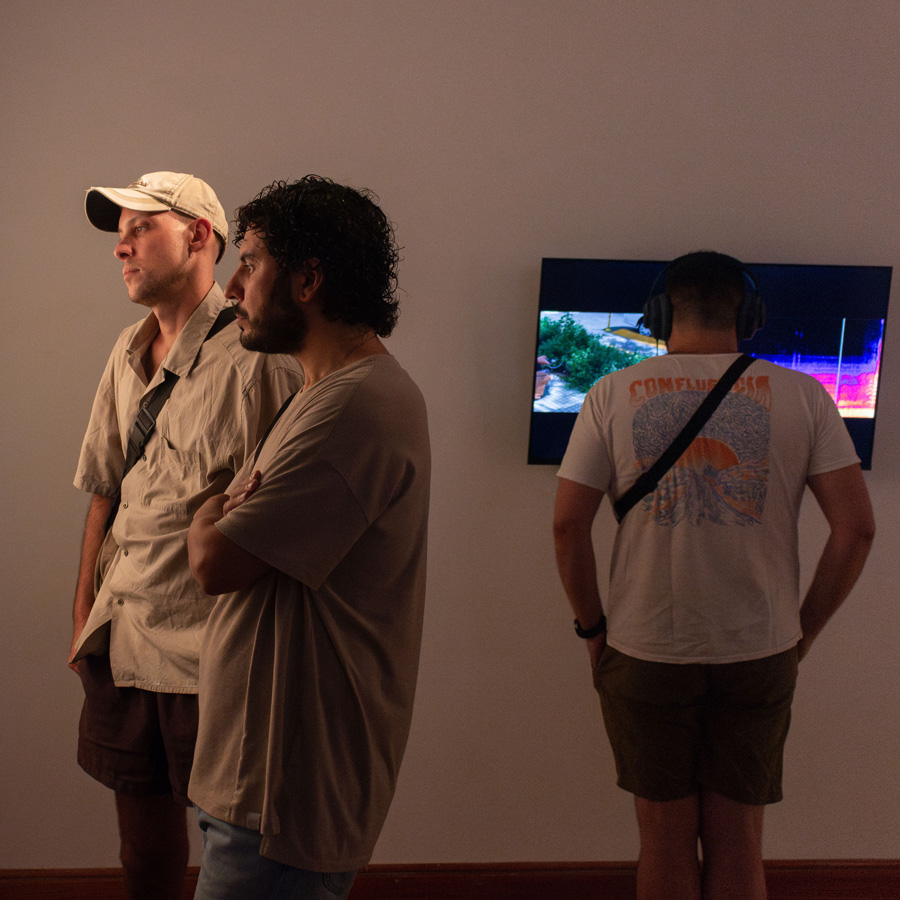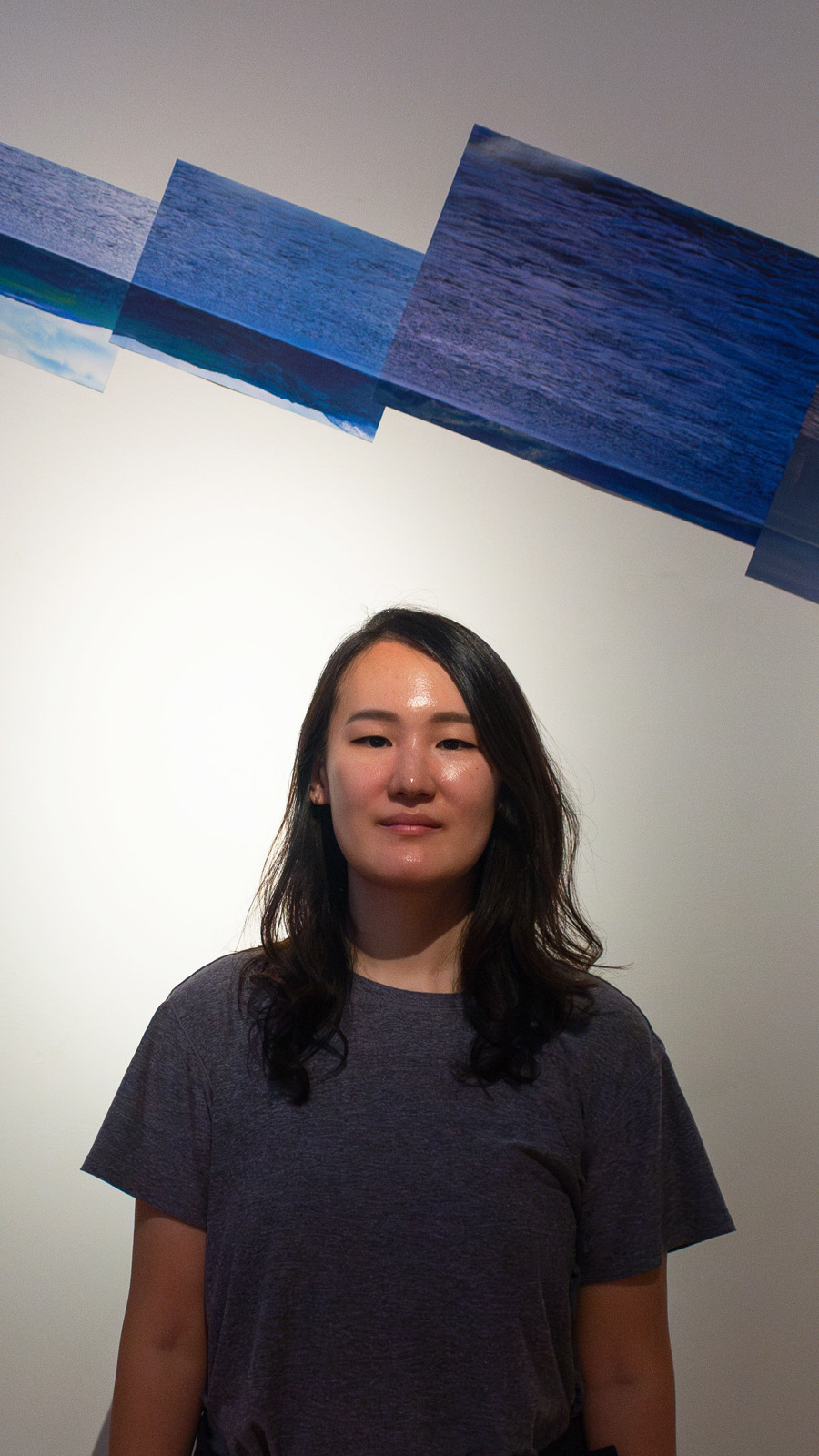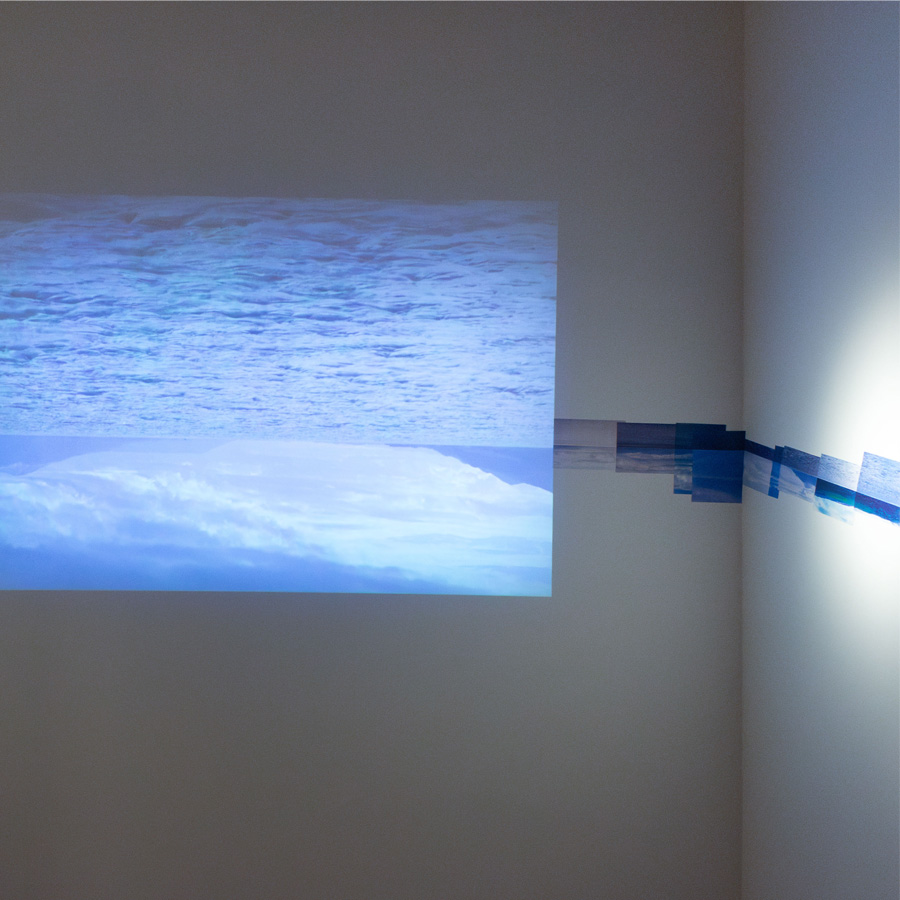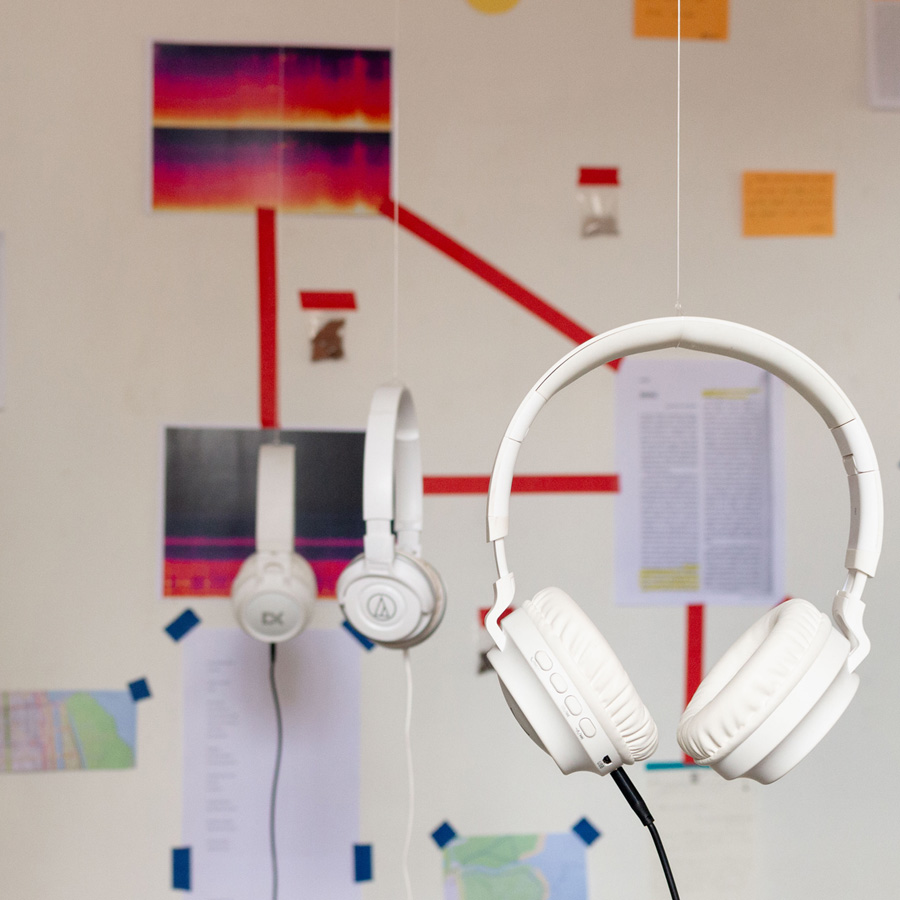Activities
Exhibitions
Flowing Roots, Scratched-out Beings
Seungyoun Lee
11.12.24 20.12.24
At midday, I had a dream.
I wandered through Buenos Aires and saw tree roots stretching above the ground. The twisting roots rising up looked like flowing rivers. Stepping into the middle of this flowing river, I found that although the water moved quickly, it felt solid and heavy, like stone. Sitting on the firm water, I looked around. A woman peeked out shyly from a gap between the roots. In another gap, an owl watched me. Many unknown creatures seemed to live in the spaces between the roots. In this project, I imagined the mysterious beings that might live between the big roots, the streams, and the small gaps.
I started engraving and scratching them onto a clear acrylic plate with a thin needle. As I did this, the faint beings slowly became visible. The more force I used and the more lines I scratched, the clearer they became. By making marks on the clear acrylic plate with a sharp needle, a new world we couldn’t see before appeared. A new world was created in the gaps where you could still see through the plate. It was like the world I saw in the gaps of the roots. Scratching many lines on the plate felt like digging into the crevices of the tree roots I had seen. The scratched acrylic plate, marked with
countless lines, only showed its true form clearly when soft ink soaked in. with printing maker, we applied ink to the acrylic plate, then wiped it off, soaked paper in water, pressed it, and dried it. This whole process made me excited and happy, like I was meeting the hidden creatures I had
encountered. Because the process required drawing many lines, I used medieval art styles and Argentina’s plants and animals as references.
The story of the forest printed from the acrylic plate continues with a pencil. It goes beyond the edges of the plate. The beings that were faint on the acrylic plate became clear on the paper and finally came out beyond the plate’s edges through the artist’s drawing. Finally, the beings hidden between
the roots carefully stepped into a new world. Like tree roots that grow endlessly both underground and aboveground and become stronger, the main characters of my work will continue to extend beyond boundaries.
This project is connected to Golden Mold, a picture book coming out in this December in collaboration with South Korea’s National Museum of Modern and Contemporary Art. (MMCA) The book includes stories about Korean mushroom spirits and a 2,000-year-old tree and forest I saw in Oaxaca, Mexico. Seeing the trees in Buenos Aires, with their roots rising above the ground, made me imagine what might happen next. I hope to keep developing the story of these strong, river-like trees when I return to Korea.
Related artists
